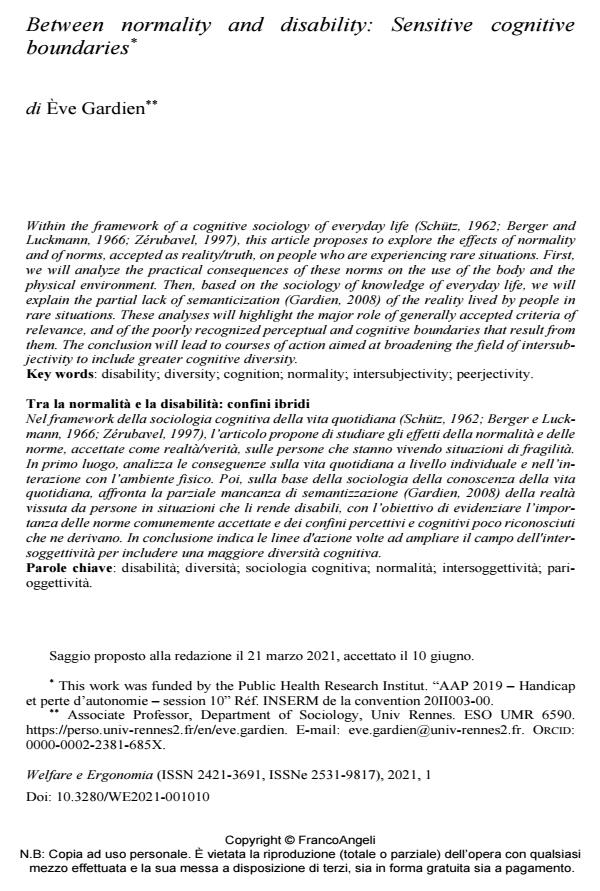Between normality and disability: Sensitive cognitive boundaries
Journal title WELFARE E ERGONOMIA
Author/s Ève Gardien
Publishing Year 2021 Issue 2021/1
Language English Pages 13 P. 104-116 File size 273 KB
DOI 10.3280/WE2021-001010
DOI is like a bar code for intellectual property: to have more infomation
click here
Below, you can see the article first page
If you want to buy this article in PDF format, you can do it, following the instructions to buy download credits

FrancoAngeli is member of Publishers International Linking Association, Inc (PILA), a not-for-profit association which run the CrossRef service enabling links to and from online scholarly content.
Within the framework of a cognitive sociology of everyday life (Schütz, 1962; Berger and Luckmann, 1966; Zérubavel, 1997), this article proposes to explore the effects of normality and of norms, accepted as reality/truth, on people who are experiencing rare situations. First, we will analyze the practical consequences of these norms on the use of the body and the physical environment. Then, based on the sociology of knowledge of everyday life, we will ex-plain the partial lack of semanticization (Gardien, 2008) of the reality lived by people in rare situations. These analyses will highlight the major role of generally accepted criteria of rele-vance, and of the poorly recognized perceptual and cognitive boundaries that result from them. The conclusion will lead to courses of action aimed at broadening the field of intersub-jectivity to include greater cognitive diversity.
Keywords: disability; diversity; cognition; normality; intersubjectivity; peerjectivity.
- Travail des frontières dans l’intervention sociale Ève Gardien, pp.123 (ISBN:9791034609260)
Ève Gardien, Between normality and disability: Sensitive cognitive boundaries in "WELFARE E ERGONOMIA" 1/2021, pp 104-116, DOI: 10.3280/WE2021-001010